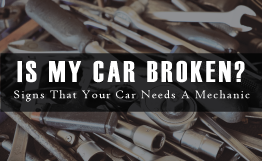Working Hours
-
Mon 8:00AM - 5:30PM
Tue 8:00AM - 5:30PM
-
Wed 8:00AM - 5:30PM
Thu 8:00AM - 5:30PM
-
Fri 8:00AM - 5:30PM
Sat Closed
-
Sun Closed
WALT'S SERVICE INC. > REPAIR SERVICES > HEATING AND COOLING SERVICES
573-449-4171 | 1204 N College Ave Columbia, MO 65201
Radiator Heating Services & Repair
A Comprehensive Assessment of Your Heating and Cooling System Comprises of:
- Examination of internal controls and blower
- Inspection of radiator coolant temperature, hoses, radiator cap pressure, and thermostat
- Evaluation of the compressor belt
- Thorough inspection of the system and seals for leaks or damage
- Conducting a cooling system pressure test
- Verification that A/C pressure meets manufacturer specifications
- Measurement of the interior vent air temperature
Our Repair and Maintenance Services Include:
Belts
The fan belt, also referred to as a drive belt, connects your vehicle's engine to its front-mounted accessories. This belt is responsible for rotating the water pump and engine fan, ensuring a cool engine environment. Unfortunately, over time, your vehicle's fan belts can dry out and develop cracks, requiring a replacement.
Coolant System Flush
A car's coolant system transfers excess heat from one part of the engine and dissipates it through the radiator fins. As time goes on, the coolant can become old and contaminated, negatively impacting the system's performance. To maintain optimal system function, consider regular coolant system flushes as part of your vehicle's cooling system maintenance.
Hoses
Hoses have the crucial role of transferring coolant and antifreeze throughout the engine's cooling system, including the radiator. With time, these hoses can dry out and develop cracks, leading to leaks. When it's time for replacement, you can rely on our team of experts for your vehicle repair needs.
Radiator Flush
Your vehicle's radiator is responsible for keeping the engine cool and safeguarding it from excessive heat. Sludge, rust, and other solid deposits can accumulate inside the radiator, leading to clogs and reduced system efficiency. This, in turn, can negatively affect your vehicle's performance. Incorporating regular radiator flushes into your routine car maintenance schedule is essential.
Radiators
Radiators serve as heat exchangers, cooling your car's internal combustion engine. They accomplish this by circulating engine coolant through the engine block and then releasing the heat into the atmosphere through radiation.
Summerize Your Vehicle
Getting your car ready for the challenges of summer, including heat, dust, and traffic congestion, can significantly reduce the risk of breakdowns. At Walt's Service Inc. in Columbia, our technicians are equipped to perform essential preventive maintenance to ensure your car is summer-ready. Here are some recommended services:
- Battery check
- Fluid replacement
- Examination of belts and hoses
- Inspection of climate and coolant systems
- Evaluation of wiper blades
- Tire inspection
- Assessment of headlights, turn signals, and tail lights
Winterize Your Vehicle
Winter weather can be harsh on both you and your vehicle. You can trust the skilled technicians at Walt's Service Inc. to prepare your car for the challenges of winter. Here are some recommended services:
- Check the battery
- Check the tires
- Check wiper blades
- Check fluids
- Check headlights, turn signals, and tail lights
- Check the exhaust system for leaks
- Check the belts and hoses
- Check the heating system
With these services, your car will be ready to tackle winter weather, ensuring your driving experience remains safe and comfortable.
Radiator FAQs
What does radiator service include?
Radiator service starts with draining the system. Then we flush the radiator and engine block, inspecting all hoses to make sure they're not cracked. Next we refill the radiator with fresh coolant and finish by pressure testing the radiator cap and cooling system.
Why is my car engine overheating?
The most common reason a car overheats is a lack of coolant or a coolant leak. However, if you have an older vehicle, it may also indicate that it is time to replace your radiator, thermostat, water pump or heater core. If it continues to be a problem that you can't fix, your best bet is to bring it to our shop in Columbia.
Coolant FAQs
Why is my coolant light on and what should I do?
If the dashboard light is red, indicating your car is overheating then you should pull over as soon as it is safe to do so and switch off the engine. If the coolant level is low or there is another problem with your cooling system, you could cause serious damage by continuing to drive.
Why is my coolant leaking?
Corrosion within the radiator is the leading cause of a coolant leak. As the radiator tubes get older and weaker, sediment or debris collects inside and causes a leak. The sealing gasket between the tank and the radiator can also wear out, and lead to a leak.
When should I do a coolant flush?
Your vehicle's owner's manual will recommend getting the coolant flushed about every 30,000 miles or three to five years, whichever comes first. Make sure to consult your owner's manual as some outline a more specific interval depending on the vehicle's make and model and your driving habits.
To learn more about our Heating and Cooling services, call us at 573-449-4171 or request a quote by clicking below:
Request Quote
Discover More About Engine Heating & Cooling Repair Services At Walt's Service Inc. in Columbia
Customer Service
Contact Us







